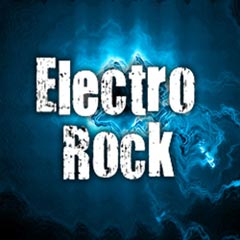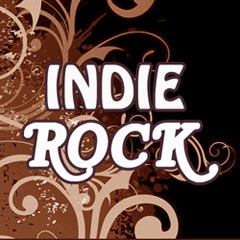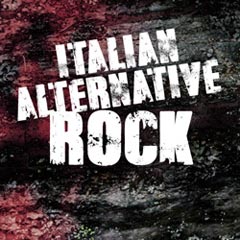Latin rock
ON AIR - PROGRAMMING
The Magic of Latin Rock Music
Music has the power to transport us to different places, make us feel a range of emotions and connect us to different cultures. The Latin rock genre does just that, with its electrifying rhythms, pulsing drum lines and high energy beats infused with the passion of Latin American culture. Latin rock is a musical phenomenon that has been taking the stage by storm for decades. In this blog, we dive deep into the heart of this unique genre, exploring the amalgamation of sounds available in the rock genre paired with Latino musical cultures. Get ready to experience the magic of Latin rock!
One thing that sets Latin rock apart is its ability to encompass a range of musical elements, including heavy guitar riffs and delicate tones. This blend of sounds creates a unique atmosphere that captivates and enchants listeners. Latin rock is all about making you move, whether you're singing along or just vibing out to the beats.
One of the earliest and most iconic Latin rock bands is Santana, formed by Carlos Santana in the late 1960s. The legendary artist, born in Mexico, is known for blending rock, blues and jazz with Latin rhythms and percussion. His distinctive sound has inspired countless artists and has stood the test of time.
Another standout artist in the Latin rock scene is Colombian-American Juanes. With hits like La Camisa Negra and A Dios Le Pido, Juanes fuses rock with Colombian folk music, creating a sound that is both innovative and infectious. His powerful lyrics and emotive performances have earned him millions of fans worldwide.
The genre continues to thrive, with new artists constantly emerging on the scene. Los Lobos, Ozomatli, and Maná are just a few of the Latin rock bands making waves in the industry today. These bands combine traditional Latin sounds and rhythms from America and the Caribbean with rock sounds and instruments, creating a fresher and more dynamic sound that attracts a new generation of fans.
The magic of Latin rock lies in its ability to blend traditional Latin flavors with rock, creating a sound that is both unique and dynamic. This genre reflects the rich cultural heritage of Latin America and showcases the passion and energy that is so deeply ingrained in its music. Latin rock is not just about the beats or catchy melodies, but about the stories, history and rich cultures that inspired its creation. So, next time you listen to a Latin rock song, let yourself get carried away by the magic of the music. You won't be disappointed!
Latin rock
Latin rock is a subgenre of rock music, consisting in the fusion between the latter with typical rhythms, themes and sounds of Latin-American and Caribbean music. In some cases, the expression Latin rock has been used to describe rock songs composed and played by musicians of Hispanic or Portuguese origins. Latin rock should not be mistaken for either Latin-American rock or rock with Spanish lyrics; Latin rock is strictly related with the alterlatin movement, or Latin alternative music, a genre that mixes 21st century rock, pop, indie and hip-hop elements.
Rock and Latin music have always influenced each other: some examples are the calypso rhythms in surf music songs, or rock’n’roll songs with a mambo or cha-cha-cha flavor. Even if it wasn’t originally known as Latin rock, this music genre was born in the US towards the end of the 1950s. In 1958, the planetary success of the Chicano singer Richie Valens, La Bamba climbed the world’s charts, paving the way to other bands like The Champs with the instrumental rock of their famous song Tequila (composed by the chicano Danny Flores), heavily influenced by Latin music.
In the 1960s, Latin-American music considerably inspired and contributed to rock music. Bands like Thee Midniters, Cannibal & the Headhunters Question Mark & the Mysterians, Sam the Sham and the Pharaohs23 or Sir Douglas Quintet incorporated Latin rhythms in rock, R&B or even garage rock songs; at the same time, the Chicano rock movement was booming in Southern California.
Meanwhile, in some America-Latin countries rock music was gradually spreading. This happened in Peru, Colombia, Argentina and, starting from the second half of 1960s, in Brasil especially, where the subgenre of tropicalism fused rock, bossa nova, psychedelic music, local sounds and Afro-Caribbean rhythms. Artist such as Os Mutantes, Gal Costa y Caetano Veloso represent some of the main influences this genre received.
In 1969, the publication of Santana’s first LP definitively marked the birth of the Latin rock scene in the US and in the world. The new style was a fusion of Latin-American rhythms, blues guitars and electric organs, Afro-Caribbean sounds, Latin percussions and jazz, soul, funk, blues, psychedelic and R&B sounds on rock themes. From this moment on, the Hispanic, Brazilian and African sounds the jazz music was elaborating were transposed to rock music. All this was topped by Santana’s 1969 Woodstock performance and by their publication of both original songs and rock flavored Latin dance covers, like the famous cover of 1962 Tito Puente Oye Como Va.
Many bands immediately followed Santana’s path: new artists like Malo (with their 1972 bolero and cha-cha-cha flavored bluesy ballad Suavecito), Tierra, Ocho, Mandrill, El Chicano, Eddie Palmieri’s Harlem River Drive, War, Sapo and Azteca (founded by Pete and Coke Escovado at the beginning of the 1970s) made Latin rock popular both in the US and in the rest of the world. Their trademark was playing a kind of music that was the result of the collaboration between jazz, rock and Latin musicians.
Similarly, in Latin-America, local bands that mixed Latin and rock sounds were born: Telegraph Avenue, Traffic Sound, The Mad's, El Polen and in particular Black Sugar, which mixed rock, jazz, Peruvian traditional percussions, progressive rock and Latin rhythms; or the Colombian Siglo Cero, Génesis y La Columna de Fuego, the Argentinian Arco Iris and the Chilean Los Jaivas. In Europe, the new genre was represented by the Spanish Barrabás, the Neerlandese Massada and the British Osibisa.
After the success of punk music at the end of 1970s, Latin rock rapidly adapted to the new music scene. This was particularly due to the Latin rock revival by punk and new wave artists, like The Clash, with their 1980 album, Sandinista, or bands like Bow Wow Wow, Gang Of Four, The Slits e Special AKA.
In Spain, during the mid-1980s, the bands who had started playing punk or new wave began to be influenced by Latin rock; a similar situation was repeated in the 1990s with artist like Macaco, Amparanoia and Jarabe de Palo. In France, bands like Les Negresses Vertes fused rock and world music with Latin-American flavors; Manu Chao, both with his band Mano Negra and as a solo artist, broke into the charts with a new genre that mixed rock, Latin rhythms, Arabic music, punk, rap and reggae.
In the US, the natural birthplace of Latin rock, many artists went on to develop this new sound: Talking Heads’ David Byrne, Peter Gabriel Paul Simon, Willy Deville, Los Lobos, El Vez, Red Hot Chilli Peppers and Rage Against The Machine.
In the 1990s, the genre developed in its cultural cradle, Latin-America: in Mexico, Maná, Maldita Vecindad, Julieta Venegas, Caifanes, Café Tacuba; in Colombia, Aterciopelados; in Brasil, Paralamas do Sucesso and Karnak; in Argentina, Carmina Burana, Los Fabulosos Cadillacs, Bersuit Vergarabat and Karamelo Santo; in Chile, Los Tres and Chancho en Piedra; in Bolivia, Octavia; in Panama, Los Rabanes. Thanks to all these artists, and in particular to Caifanes and Los Fabulosos Cadillacs, a further development of the genre took place, fusing rock with a number of styles and rhythms that came to include, among the other, salsa, merengue, cumbia, Brazilian music, the ranchera music of Mexican mariachis and Andean music.
As of today, the success of the genre is due to artists like Los Lonely Boys with their 2004 self-titled album, to the great Carlos Santana and his 1999 album Supernatural and many other.
What are you thinking about?







